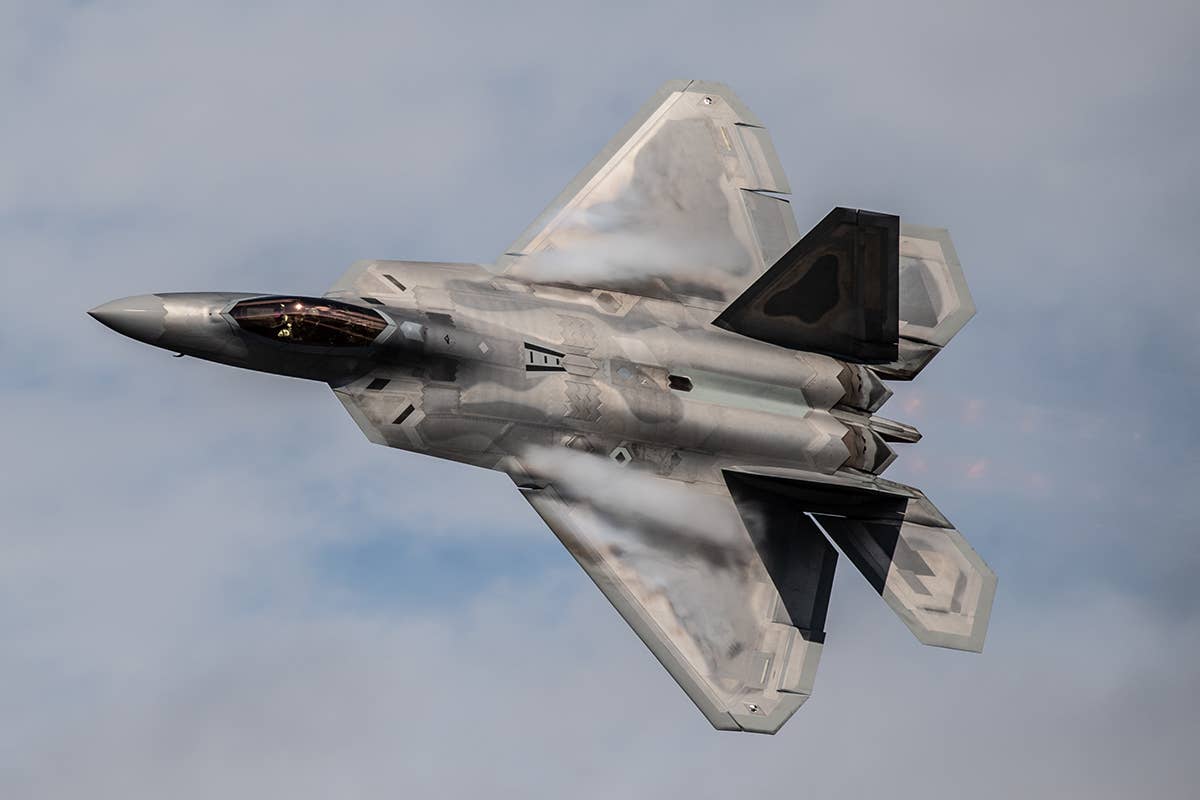Congress Pushes Back on Air Force Retirement Plans for Older F-22 Raptors
The U.S. Air Force said it wanted to start retiring older F-22 Raptors in the coming budget year, but Congress has other plans.

“The nation has far too few fifth-generation fighters given global demand,” said Douglas Birkey of the Mitchell Institute for Aerospace Studies. [Courtesy: U.S. Air Force/Lt. Sam Eckholm]
The U.S. Air Force’s plans to retire aging F-22 Raptors in fiscal 2023 aren’t flying with some members of Congress, who want to force the service to keep and upgrade all of the stealth fighter airframes to combat-ready status.
In the $773 billion Department of Defense fiscal year 2023 budget submitted to Congress, the Air Force proposed retiring 33 Block 20 fighter jets currently used for training and non-combat operations, culling its F-22 fleet of fewer than 190 airframes by 33.
The rationale was fiscal, according to the service, which said it would cost $1.8 billion over eight years to update the older aircraft—money it felt would be better spent on other F-22 upgrades and F-35A modernization.
Draft fiscal 2023 appropriation plans released last week by the House Armed Services Committee, however, pushed back on the retirement talk. In the 2023 National Defense Authorization Bill, lawmakers instead added a requirement for "the Secretary of the Air Force to maintain a minimum quantity of F-22 aircraft with common air superiority mission employment capabilities to meet Department of Defense combat air forces training, testing, and operational steady-state and major contingency requirements in support of geographical combatant commanders' planning and operations."
In the Senate, the Armed Services Committee echoed the stance, prohibiting F-22 Block 20 retirement until the Air Force submitted a detailed plan for training F-22 aircrew "while avoiding any degradation in readiness or reduction in combat capability."
Keeping older F-22s makes sense, according to Douglas Birkey, executive director of the Arlington, Virginia-based Mitchell Institute for Aerospace Studies.
"This is a prudent decision. The nation has far too few fifth-generation fighters given global demand," Birkey told FLYING in an email. "The F-22 buy was undersized from day one."
The Air Force's initial F/A-22 requirement was 381 aircraft, but the number was slashed because of spending in Iraq and Afghanistan.
"Risk was hedged by extending the F-15C fleet and placing greater mission load on F-35s," Birkey said. "Since that decision was made, the F-15C inventory has been flown to structural exhaustion, nor is it survivable in high-end threat environments. The F-35 buy has not accelerated as planned. While the service is looking at a next generation air dominance set of capabilities that would be fielded in the 2030s, the reality is, that solution is largely conceptual."
What is real, says Birkey, are F-22s and F-35s already in the fleet.
"We need to protect those assets. Capabilities promised tomorrow are not real until they are operationally viable in quantity," he said.
Keeping the entire F-22 fleet combat capable is "risk mitigation," a House Armed Services Committee staffer told Air Force Magazine. “When we let the Air Force curtail the program back in 2010... they told us that the training capacity would always be available to meet contingency requirements, if and when needed, along with the 234 F-15Cs,” the staff member told the magazine. “Now that the Air Force is retiring all their F-15Cs, they’ve cut the buy in half for F-15EX, [the Next Generation Air Dominance program] has slid further to the right than what they originally told us, and now they want to reduce their F-22 capacity. We think there’s significant risk in meeting future air superiority requirements. And so we’re holding the Air Force accountable to their commitment to have the training-coded jets combat capable.”

Subscribe to Our Newsletter
Get the latest FLYING stories delivered directly to your inbox






